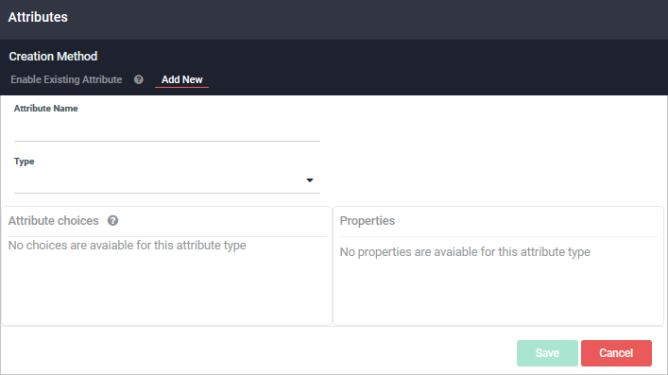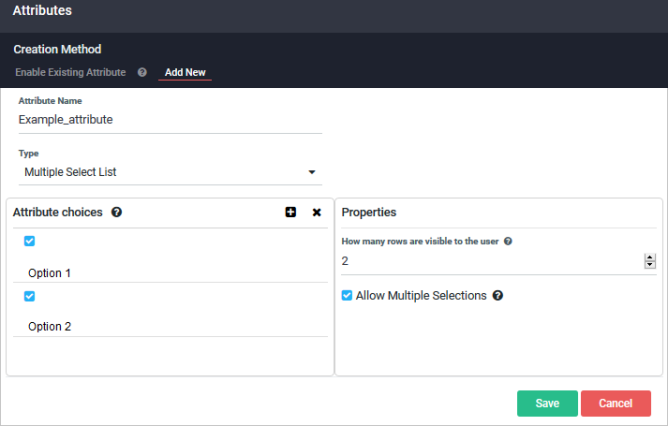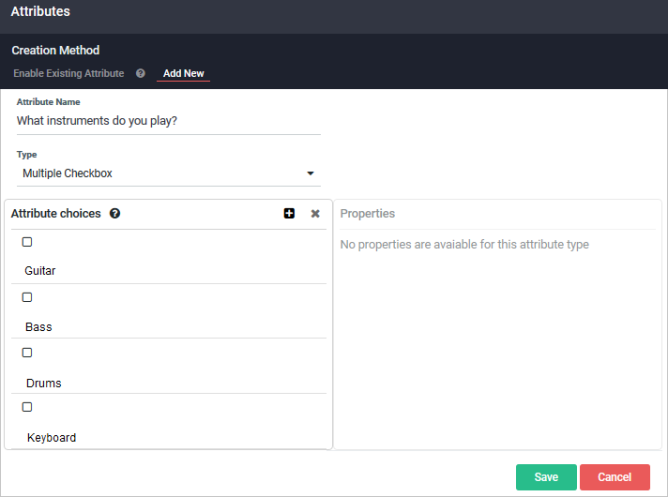Creating an Attribute
You can create a new attribute or enable an existing attribute in the current mailing list. To create an attribute:
- In the side navigation bar, click Email Marketing > Attributes.
- Click
 .
. - Select the Add New tab.

- Click the Attribute Name box and type a name.
- Click the Type drop-down list and choose a type. Your choices are:
- Text
- Textarea
- Checkbox
- Date
- Radio Button
- Select List
- Multiple Select List
- Multiple Checkbox
- Autoincrement
For more information, see About Attribute Types.
- In the Attribute Choices section, click
 to enter the choices for the attribute. To remove a choice, use the x.
to enter the choices for the attribute. To remove a choice, use the x. - If your attribute is Select List, choose the following options in the Properties box:

- Upon completion, click the SAVE button.
- A newly-created Attribute is enabled in the mailing list you created it in. In all other lists, it is available but disabled; to use it, you must enable it.
- Keeping your Attributes list small shortens the amount of time you spend scrolling through questions.
For more information, see Uploading an Existing Mailing List.
An Example of Creating Attributes
You sell musical instruments on the web. You want to find out the following about your members:
- The instruments they play
- If they are planning to buy an instrument for someone else
To answer these questions, you create an attribute for each of these pieces of information. The attribute itself takes the form of a question. Next, you create a survey and send it to your members; when they answer the survey, each answer is attached to their member profiles as an attribute of that profile. You can use these attributes to achieve more specific targeting for your email campaigns. For example, if a member answers that they play the guitar, and you have a big guitar clearance sale coming up, you know that you should include that member in your campaign. However, if that member plays the drums, you may want to exclude that member.
Create an attribute that provides information about which instruments a member plays as shown in the following:
